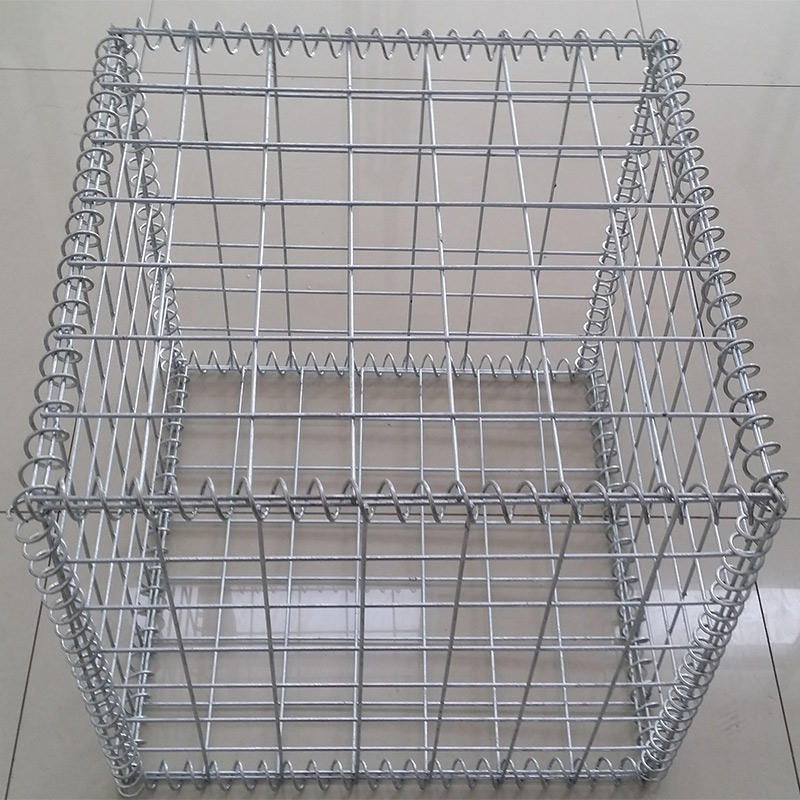Dec . 10, 2024 15:02 Back to list
hot dip galvanized steel grating factory
Hot-Dip Galvanized Steel Grating A Comprehensive Overview of Manufacturing and Applications
Hot-dip galvanized steel grating is a versatile and highly durable product that serves various applications across multiple industries. Its manufacturing process involves immersing steel grating in molten zinc, resulting in a protective coating that significantly enhances its longevity and resistance to corrosion. This article delves into the manufacturing process, benefits, and diverse applications of hot-dip galvanized steel grating, focusing on aspects relevant to factory production.
The Manufacturing Process
The production of hot-dip galvanized steel grating begins with the selection of raw materials. High-quality steel bars are typically used for creating the grates, ensuring strength and sturdiness. The steel bars are cut to the desired length and are then assembled into a grating pattern, usually in a rectangular shape. The most common types of steel grating include welded grating, press-locked grating, and swage-locked grating, each offering different load-bearing capacities and design features.
Once the grating is fabricated, it undergoes a thorough cleaning process to remove any surface contaminants, such as rust, grease, or dirt. This step is crucial as it ensures the zinc coating bonds effectively to the steel. The cleaning process often employs a combination of mechanical and chemical methods, including shot blasting and acid etching.
After cleaning, the grating is preheated to ensure optimal adhesion of the zinc coating. It is then submerged in a bath of molten zinc, where the coating process occurs. The temperature of the molten zinc typically ranges from 450 to 460 degrees Celsius (approximately 840 to 860 degrees Fahrenheit). During immersion, the zinc reacts with the iron in the steel to form a series of zinc-iron alloy layers, followed by a layer of pure zinc on the surface.
Upon removal from the bath, the galvanized grating is allowed to cool, solidifying the coating. The final product is then inspected for quality assurance, ensuring that it meets industry standards before being packaged for shipment. Factories specializing in hot-dip galvanized steel grating often implement rigorous quality control measures throughout the manufacturing process to guarantee durability and performance.
Benefits of Hot-Dip Galvanization
The hot-dip galvanization process provides several notable benefits. First and foremost, it offers superior corrosion resistance, making the grating suitable for use in harsh environments, such as chemical plants, waste treatment facilities, and coastal regions. The zinc coating acts as a sacrificial anode, protecting the underlying steel from rusting and degradation.
hot dip galvanized steel grating factory

Additionally, hot-dip galvanized steel grating requires minimal maintenance compared to other types of grating, such as painted or untreated steel
. The coating significantly prolongs the lifespan of the product, often exceeding 25 years without the need for repainting or extensive upkeep.Moreover, the aesthetic appeal of galvanized steel grating enhances its attractiveness for architectural applications. The bright, silvery finish of the zinc coating provides a clean and modern appearance, making it suitable for both industrial and commercial settings.
Applications of Hot-Dip Galvanized Steel Grating
The versatility of hot-dip galvanized steel grating allows it to serve a wide array of applications. It is commonly used in industrial environments for flooring, walkways, platforms, and drainage covers. Its ability to withstand heavy loads and high foot traffic makes it a preferred choice in factories, warehouses, and manufacturing facilities.
In municipal projects, hot-dip galvanized grating is employed for street and sidewalk grates, providing durability and safety in public spaces. It is also extensively used in the construction of stair treads and landings, ensuring compliance with safety regulations while offering slip resistance.
The agricultural sector benefits from galvanized grating as well, with applications in livestock pens, feeding areas, and barn floors, where corrosion resistance is paramount due to exposure to manure and moisture.
Conclusion
Hot-dip galvanized steel grating is an essential component in various industries, characterized by its strength, durability, and resistance to corrosion. Understanding the manufacturing process and the numerous advantages of this material emphasizes its importance in modern construction and industrial applications. As industries continue to prioritize safety and longevity, hot-dip galvanized steel grating remains a top choice for manufacturers and builders worldwide.
-
Welded Wire Mesh for Industry Factory - Anping County Puersen Hardware Wire Mesh Products Co., Ltd.
NewsAug.29,2025
-
Welded Wire Mesh for Industry Factory | Durable & Cost-Effective Solutions
NewsAug.29,2025
-
Durable Welded Wire Mesh for Industry Factory | Custom Solutions
NewsAug.27,2025
-
Durable Welded Wire Mesh for Industry Factory - High Quality
NewsAug.26,2025
-
Leading Galvanized Steel Fence Factory | Durable & Secure Fencing
NewsAug.24,2025
-
Welded Wire Mesh for Industry Factory - Durable & Custom Solutions
NewsAug.23,2025

